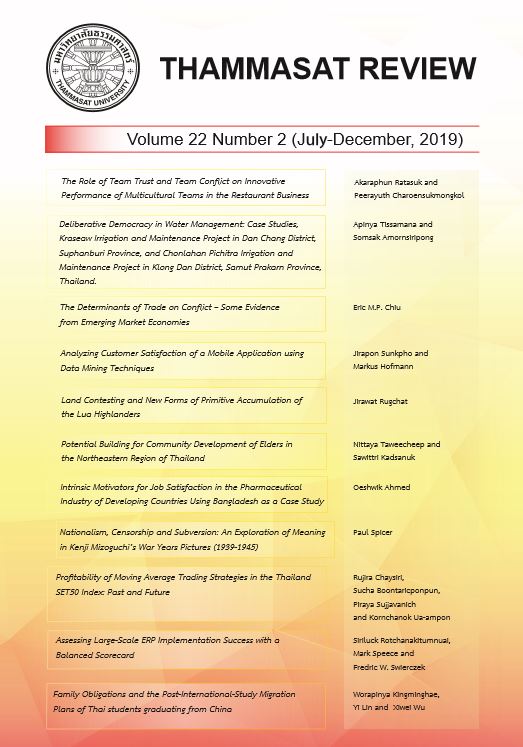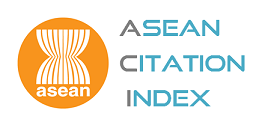The Profitability of Moving Average Trading Strategies in the Thailand SET50 Index: Past and Future
Keywords:
Buy and hold strategy, Moving average, Logistic regression, Artificial neural network, Thailand SET 50 IndexAbstract
Technical analysis is one of the most popular methods that some investors believe can generate profit from stock markets. However, there is no consensus that technical analysis strategies can always make profits in different asset conditions. This study focuses on finding whether moving average trading strategies can outperform the buy and hold strategy in particular asset conditions. These asset conditions are constructed from the volatility and volume of a trading period of a stock in the Thailand SET50 index. In addition, this study forecasts the asset conditions of a stock for the next period by comparing the logistic regression and artificial neural network, to make the technical trading strategies useful in practice. The results show that the moving average trading strategies outperforms the buy and hold strategy in one asset condition. For forecasting the results of an asset condition, an artificial neural network has a higher accuracy rate than logistic regression for predicting asset conditions.
Downloads
Published
How to Cite
Issue
Section
License
The opinions and ideas expressed in all submissions published in Thammasat Review are solely that of the author(s) and do not necessarily reflect that of the editors or the editorial board.
The copyright of all articles including all written content and illustrations belong to Thammasat Review. Any individuals or organisation wishing to publish, reproduce and distribute a particular manuscript must seek permission from the journal first.








